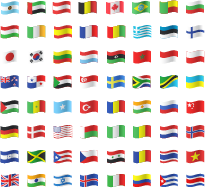PHILIPPINES PEO & EOR
Hire in Philippines without a local entity today
DID YOU KNOW
- While Tagalog, Cebuano, and English are three of the nation’s primary languages, the Philippines is home to over 175 languages in total.
- Basketball is enjoyed by many in The Philippines, and the country is home to Asia’s first Basketball League.
- The Philippines is one of the largest archipelagos in the world, comprising around 7,641 islands. Of these, over 5,000 of them remain unnamed.
Forget software,
this is expansion
with a human touch
Philippines PEO Services
One of the most skilled workforces in Asia
Situated in Southeast Asia, this archipelagic nation is made up of around 7,640 islands and is home to a variety of emerging business sectors. A stable democratic nation with a growing economy, the Philippines saw a huge transition during the 20th century, where it evolved from a primarily agricultural economy to one driven by professional services and manufacturing.
Alongside its economic strength, the Philippines has an appealing tropical climate, fantastic culture, and a friendly population. Its workforce is one of the most skilled in Asia, and the population have high rates of education and literacy.
While expanding a business into the Philippines can present some challenges, partnering with a Philippines PEO partner like Gibson Watts Global can significantly simplify the process.
Working in Philippines
Employment Information
The Philippines’ economy is backed by its strong trade connections with other countries in Asia. While agriculture remains a key industry in this country, IT, energy, transport infrastructure, and manufacturing are all other primary industries which make up this economy.
Businesses hiring in the Philippines must observe a variety of payroll regulations, including monthly withholding obligations and benefits for both foreign and local employees. In general, salaries are paid twice each month, usually on the 15th and 30th.
The Philippines has a mandated minimum wage, which is projected to reach 547 PHP per day by 2023. Employers are also required to provide an additional month’s worth of basic salary under the nation’s 13th Month Pay policy. This shouldn’t be paid later than December 24th every year.
Both employers and employees are required to pay into the Philippines’ Social Security System (SSS). The SSS is a privatised social insurance system which protects employees and individuals against loss of income resulting from disability, sickness, maternity, old age etc.
The contribution rate equals 13% of a worker’s monthly salary, with 8.5% being contributed by the employer, and 4.5% from the employee.
Leaves and Public Holidays
Workers in the Philippines are entitled to a range of different leaves including paternal leave, solo parenting leave, special leave, and Service Incentive Leave (SIL). Each leave has different requirements which are established in the nation’s labour laws.
The Philippines also observes a variety of public holidays in which employees are not required to work. The nation’s regular public holidays include:
- New Year’s Day
- Araw ng Kagitingan
- Maundy Thursday
- Good Friday
- Labor Day
- Eid’l Fitr (Feast of Ramadan)
- Independence Day
- Eid’l Adha (Feast of Sacrifice)
- National Heroes Day
- Bonifacio Day
- Christmas Day
- Rizal Day
Other holidays in which workers are not required to work include:
- Chinese New Year
- EDSA People Power Revolution
- Black Saturday
- Ninoy Aquino Day
- All Saint’s Day
- Feast of the Immaculate Conception
Cultural Information
The Philippines has a unique culture which is inspired by both Eastern and Western traditions. Filipino people have an appreciation for the arts, music, and great food, and are generally considered to be very welcoming to foreigners.
The prevalent religion in The Philippines is Roman Catholicism, and other branches of Christianity are also present throughout the nation. The Philippines is the only country in Asia which has Christianity as its primary religion.
Tagalog and Cebuano are the two most spoken languages in The Philippines. The population also has a good proficiency of the English language, and it is taught in the country’s schools.
Impacts from COVID-19
The Philippines was significantly affected by the COVID-19 pandemic, with its economy declining to the lowest level since World War II. Some measures, such as remote and flexible working patterns, were introduced in certain industry sectors. As of 2022, the nation’s economy is expected to begin rebounding from the impacts of the pandemic.

